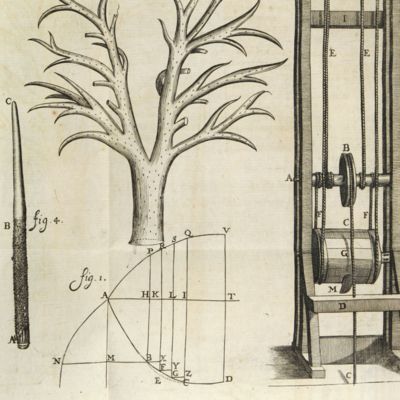Bernoulli, J.
Analysis magni problematis isoperimetrici.
Leipzig, J. Gross, T. Fritsch & F. Groschuf, 1701. Small 4to (18.5 x 16.0 cm). 16 pp. [numbered 213-228]. Contemporary full blind vellum. Red edges.
The first correct solution of the isoperimetric problem, already formulated by the ancient Greeks, which had bothered the foremost mathematicians, such as Leibniz, and Johann and Jacob Bernoulli for years. Jacob Bernouilli (1654-1705) was the first of three brothers who were all mathematicians "Jacob was the first to develop the calculus beyond the point at which it was left by Newton" (PMM, p. 107). The solution to the isoperimetric problem (which curve, if any, maximizes or minimizes the area of its enclosed region?) forms the basis of a new branch of mathematics: the calculus of variations. This first correct solution, by Jacob Bernouilli, was published in the leading scientific periodical of its days, the Nova Actorum Eruditorum. "After showing that a third-degree equation is required (1701), Jakob was able to furnish the proof, which Johann and Leibniz had been seeking in vain..." (DSB). This is in fact the entire 583 pp. volume for 1701, which also deals with other scientific subjects, such as: another contribution to the isoperimetric problem, by the Swiss mathematician and friend of Isaac Newton, Nicolas Fatio de Duillier (1664-1753), “Excerpta ex responsione Dn. Nic. Fatii Duillierii ad excerpta ex literis Dn. Joh. Bernouillii” (pp. 134-136, and a plate); and three other papers by Jacob's brother, Johann Bernouilli: a work on lenses, “Disquisitio catoptrico-dioptrica exhibens reflexionis & refractionis naturam, nova & genuine ratione ex aequilibrii fundamento deductam” (pp. 19-26, and share of a plate); “Nova ratio promte construendi radios osculi seu curvaturae in Curvis quibusvis sive algebraicis in sive transcendentibus. Item methodus eosdem analytice determinandi in curvis algebraicis per vulgarem differentialium calculum eruta”, on pp. 136-140; and “Multisectio anguli vel arcus, duplici aequatione universali exhibita inserviens generali determination omnium zonarum quadrabilium cycloideis” on pp. 170-175. In 1718, Jacob’ s younger brother Johann found another solution to this problem. That one was published in the leading French scientific periodical, the "Mémoires" of the French Royal Society. Slight damage to spine cover, internally a very good, clean copy. DSB II, p. 48.




